Abstract
Organ cultures of guinea-pig foetal tissues showed a similar pattern of susceptibility to influenza virus to that already observed for human (Rosztoczy et al., 1975) and ferret (Sweet, Toms and Smith, 1977) foetal tissues. Respiratory, alimentary and urogenital tract tissues were susceptible whereas neural and lymphopoietic tissues were insusceptible. However, of the foetal membranes (amnion, chorion, umbilical cord and placenta) only the chorion was susceptible, in contrast to the corresponding ferret tissues, all of which were susceptible. The insusceptibility of the placenta paralleled that of human placenta which is similarly haemomonochorial in structure. Following intracardial inoculation of high titre virus (ca 10(9-4) EBID50) into pregnant guinea-pigs virus was isolated from all foetal membranes (amnion, chorion, umbilical cord and placenta), but in low titre. Although sporadic isolations were made from foetal tissues (intestine, kidney, heart, liver and spleen) there was no evidence for viral replication in these tissues. These results are discussed in relation to possible infection of the human foetus in utero with influenza virus.
Full text
PDF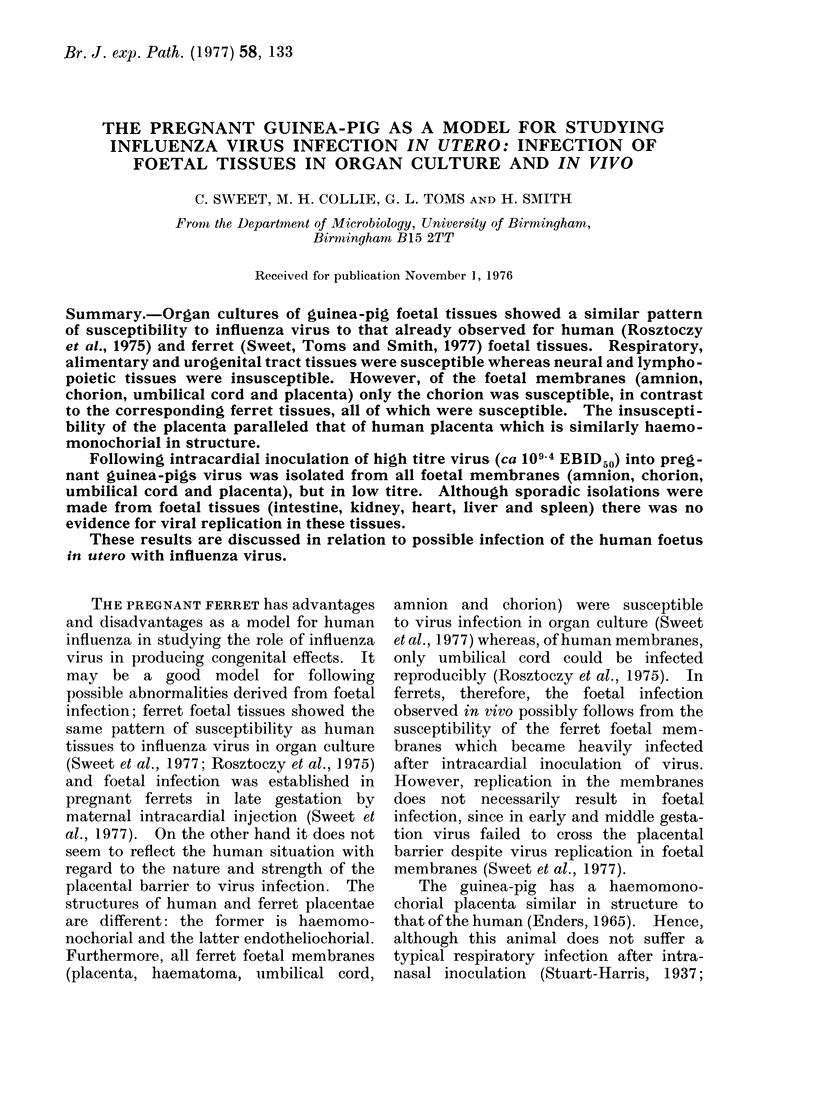
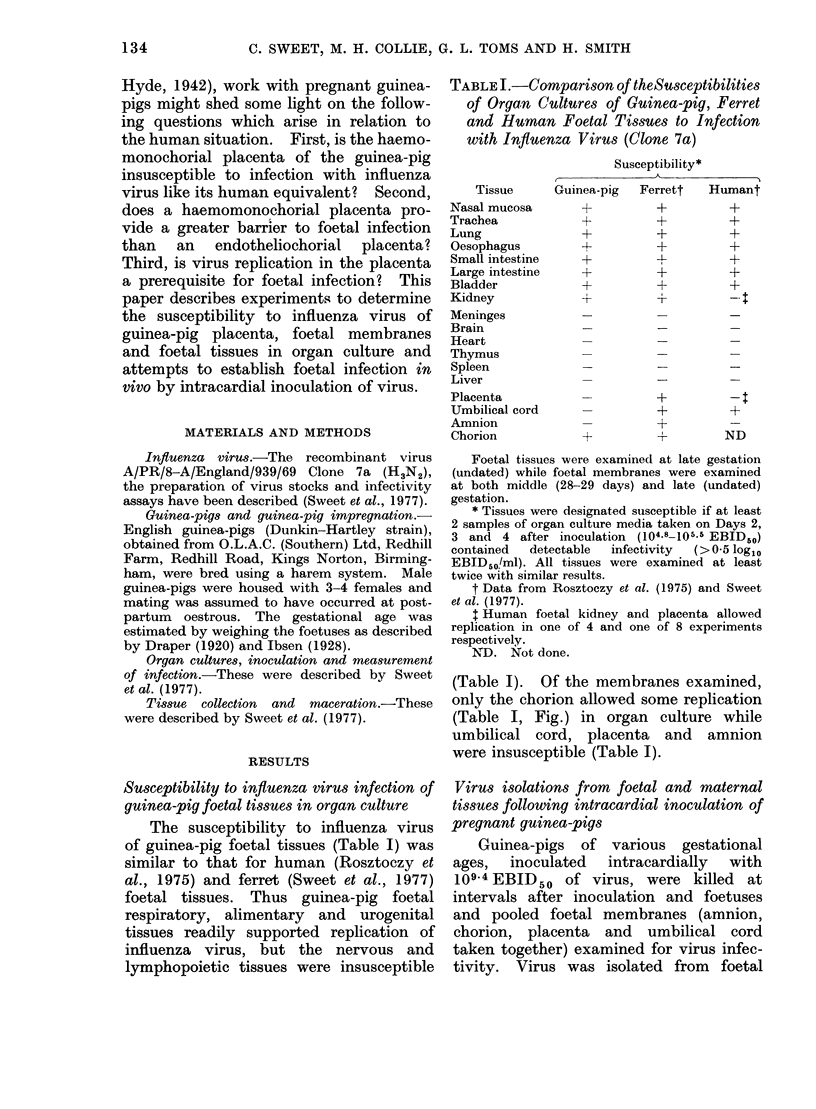
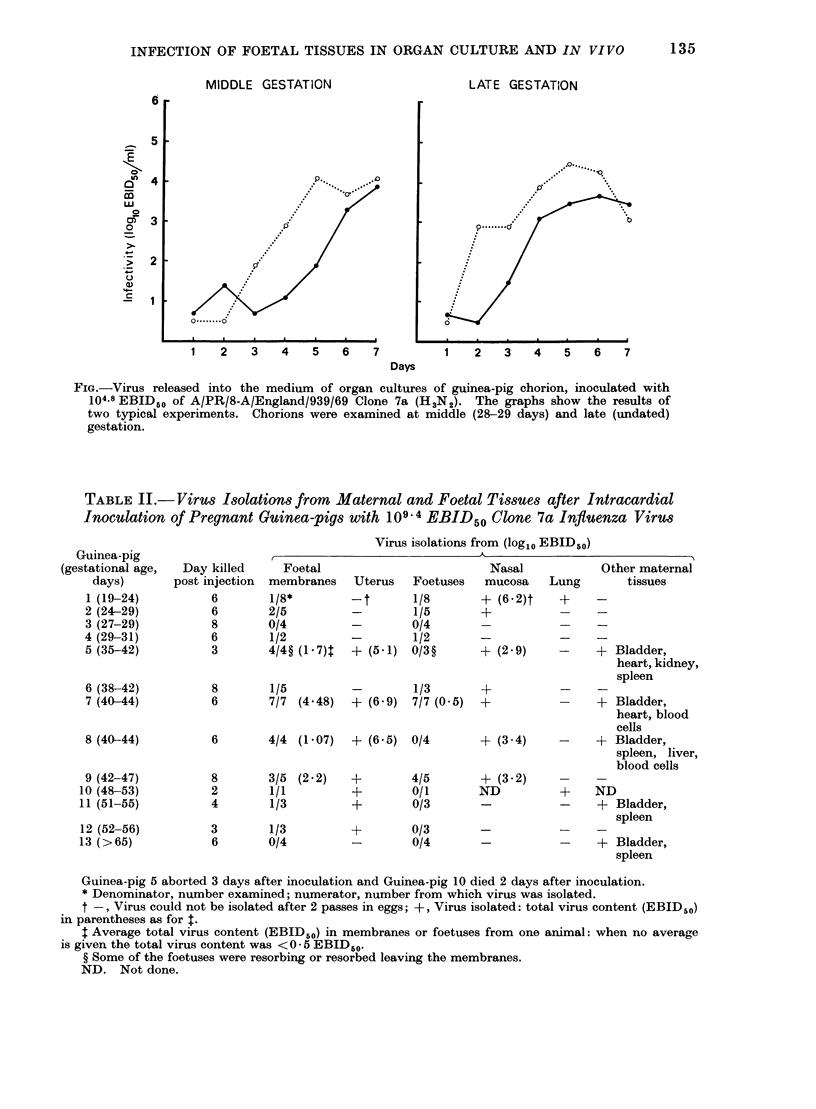
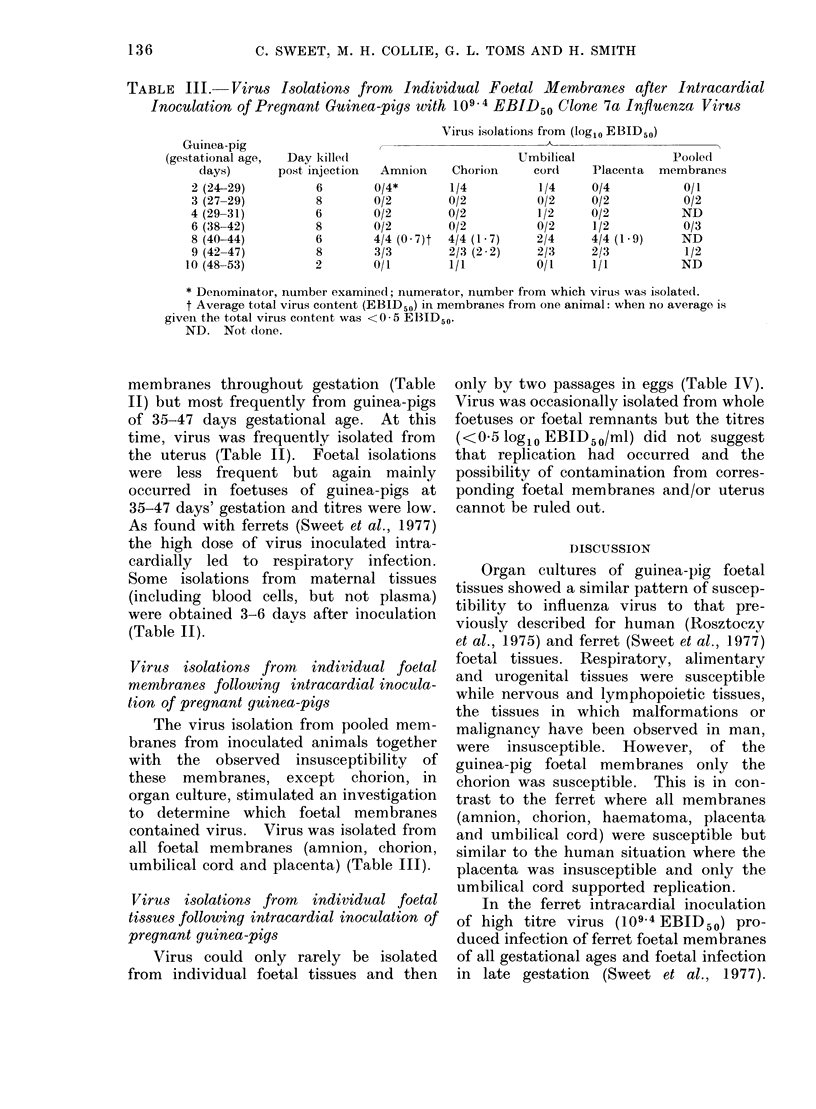
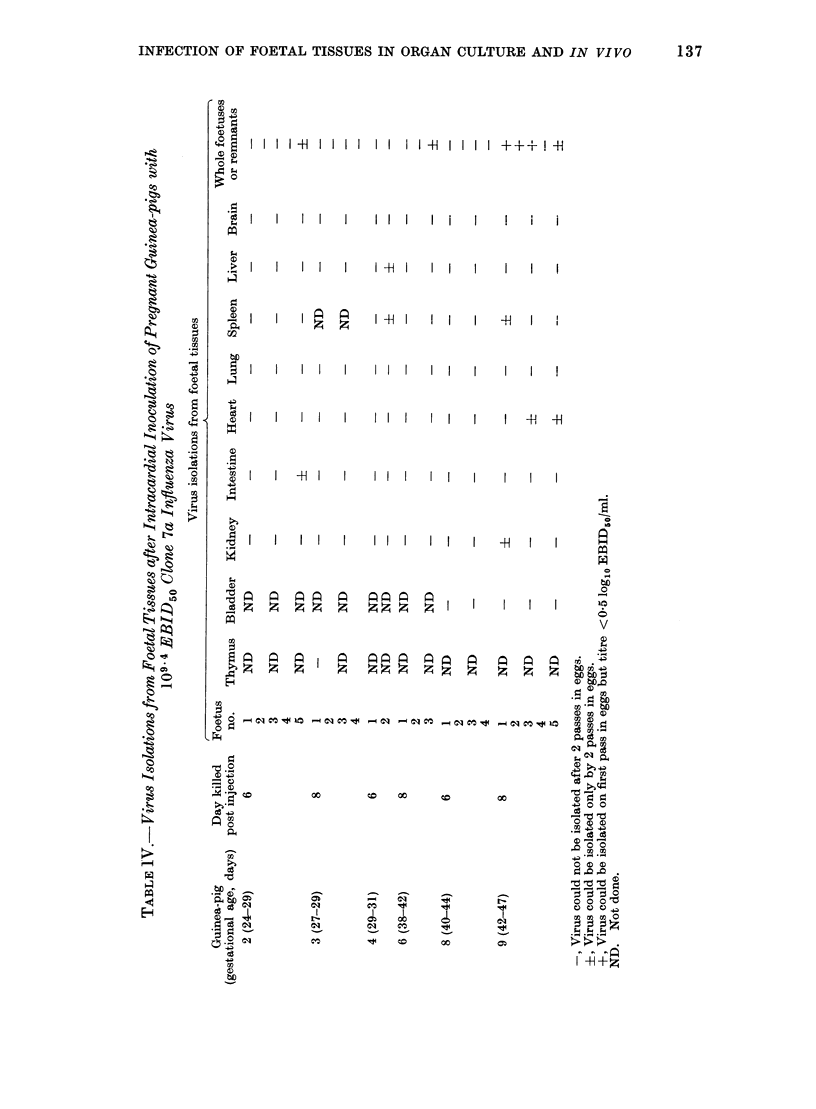
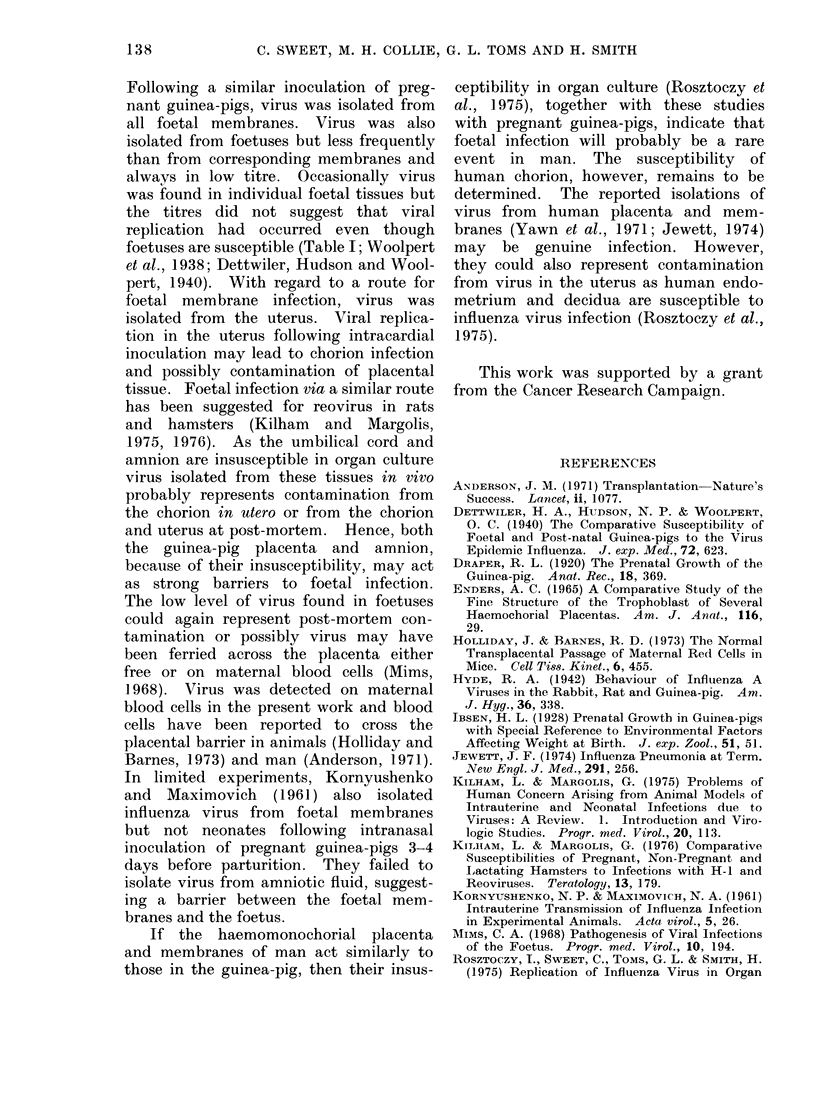
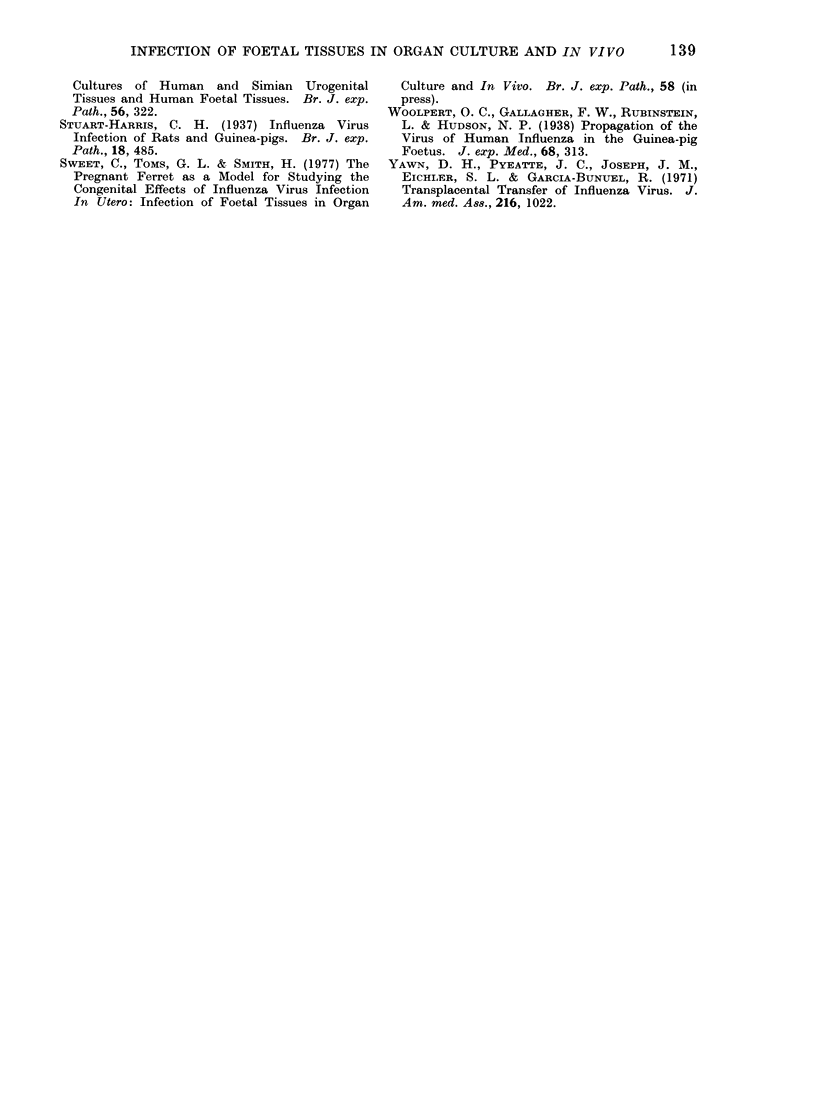
Selected References
These references are in PubMed. This may not be the complete list of references from this article.
- Anderson J. M. Transplantation--nature's success. Lancet. 1971 Nov 13;2(7733):1077–1082. doi: 10.1016/s0140-6736(71)90394-1. [DOI] [PubMed] [Google Scholar]
- ENDERS A. C. A COMPARATIVE STUDY OF THE FINE STRUCTURE OF THE TROPHOBLAST IN SEVERAL HEMOCHORIAL PLACENTAS. Am J Anat. 1965 Jan;116:29–67. doi: 10.1002/aja.1001160103. [DOI] [PubMed] [Google Scholar]
- Holliday J., Barnes R. D. The normal transplacental passage of maternal red cells in mice. Cell Tissue Kinet. 1973 Sep;6(5):455–459. doi: 10.1111/j.1365-2184.1973.tb01633.x. [DOI] [PubMed] [Google Scholar]
- Jewett J. F. Influenza pneumonia at term. N Engl J Med. 1974 Aug 1;291(5):256–257. doi: 10.1056/NEJM197408012910513. [DOI] [PubMed] [Google Scholar]
- KORNIUSHENKO N. P., MAKSIMOVICH N. A. Intrauterine transmission of influenza infection in experimental animals. Acta Virol. 1961 Jan;5:26–30. [PubMed] [Google Scholar]
- Kilham L., Margolis G. Problems of human concern arising from animal models of intrauterine and neonatal infections due to viruses: a review. I. Introduction and virologic studies. Prog Med Virol. 1975;20:113–143. [PubMed] [Google Scholar]
- Mims C. A. Pathogenesis of viral infections of the fetus. Prog Med Virol. 1968;10:194–237. [PubMed] [Google Scholar]
- Rosztóczy I., Sweet C., Toms G. L., Smith H. Replication of influenza virus in organ cultures of human and simian urogenital tissues and human foetal tissues. Br J Exp Pathol. 1975 Aug;56(4):322–328. [PMC free article] [PubMed] [Google Scholar]
- Yawn D. H., Pyeatte J. C., Joseph J. M., Eichler S. L., Garcia-Bunuel R. Transplacental transfer of influenza virus. JAMA. 1971 May 10;216(6):1022–1023. [PubMed] [Google Scholar]


